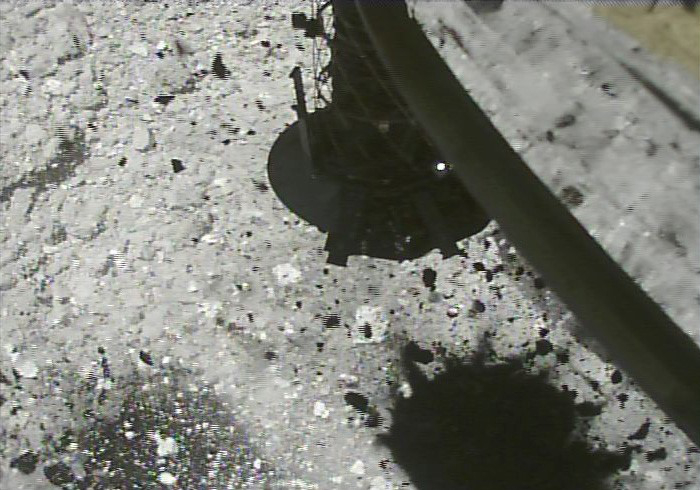
Credit: Jaxa
-
By studying samples from the asteroid Ryugu, the group found that their iron makeup is indistinguishable from the rare type of carbonaceous chondrite meteorites known as carbonaceous Ivuna type (CI).
-
Both Ryugu and the CI chondrites originate from the same region of space, on the outskirts of the solar system, and could even have shared the same parent body
Since return mission Hayabusa2 brought samples of asteroid Ryugu back to Earth in 2020, a team of experts from across the world have been examining them to learn more about the origins of our solar system.
Carbonaceous chondrites, such as the Winchcombe meteorite which fell to Earth and was retrieved in Gloucestershire in 2021, are an extremely rare group of meteorites which have been known to contain organics and amino acids – ingredients for life. They are the most primitive and pristine materials of the solar system and can provide unique information on where water and the building blocks of life were formed, and what planets are made from.
Ryugu Returned
In this study, published in the journal Science Advances, the team conclude that Ryugu, now a near-Earth object, was among the group of asteroids known as the Cb-type which formed billions of kilometres away from Earth, towards the edge of the Sun's influence, in a region of space such as the Kuiper Belt, or perhaps even deeper into space.
Professor Sara Russell, a Senior Research Lead at the Museum who co-authored the paper, says, 'It's only within the last decade we've begun to appreciate just how far objects in the solar system can move towards, and away from, the Sun.'
'While there is general acceptance that material from the outer solar system could have been moved inwards by the giant planets, this is one of the first studies which suggests the asteroid belt contains material originating as far out as Neptune. This adds an extra layer of detail to our knowledge of how the solar system formed.'
The group set out to investigate whether Cb-type asteroids, such as Ryugu, could be the parent body of a rare group of meteorites known as CI chondrites. Meteorites are key to helping us understand the solar system, however their scientific value is restricted if their formation location is not known. By determining where they originated from, their potential to answer some of the biggest questions asked by scientific community is maximised.
The findings suggest that both Ryugu and the CI chondrites originate from the same region of space, and it can't rule out that they could even share the same parent body.
Prof Russell continues, 'By comparing the forms of iron in both the asteroids and meteorites, we learnt that Ryugu is a remarkably close match to CI chondrites. These are the rarest type of carbonaceous meteorite, and I'm really excited as the type specimen, Ivuna, is within the Museum's collections.'
'This discovery is very exciting for me as it means that the Museum's meteorite collection is sampling the whole of our solar system,' Sara says. 'Along with other types of meteorites, such as the enstatite chondrites from the inner solar system and ordinary chondrites from the asteroid belt, we can study huge swathes of space from here in London.'

Ivuna Meteorite, credit: Trustees of the Natural History Museum
The Natural History Museum is both a world-leading science research centre and the most-visited indoor attraction in the UK last year. With a vision of a future in which both people and the planet thrive, it is uniquely positioned to be a powerful champion for balancing humanity’s needs with those of the natural world.
It is custodian of one of the world’s most important scientific collections comprising over 80 million specimens accessed by researchers from all over the world both in person and via over 30 billion digital data downloads to date. The Museum’s 350 scientists are finding solutions to the planetary emergency from biodiversity loss through to the sustainable extraction of natural resources.
The Museum uses its global reach and influence to meet its mission to create advocates for the planet - to inform, inspire and empower everyone to make a difference for nature. We welcome millions of visitors through our doors each year, our website has had 17 million visits in the last year and our touring exhibitions have been seen by around 20 million people in the last 10 years.

